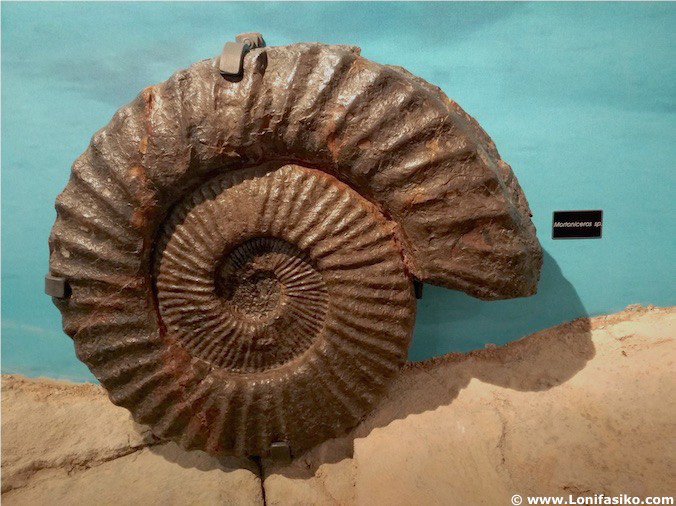Good practice in managing fossil heritage
a case study provided by the Basque Coast UNESCO Global Geopark, Spain
Paleontological collections (fossils) can be important educational and touristic resources for our geoparks, but their management can also be a complex and committed task that we must face.
Selling of fossils is not permitted by UNESCO Global Geoparks under the Charter, but very often fossils have been collected by private collectors in our territories. Furthermore, in most countries this activity has been allowed by a complete lack of governmental regulations, and the commercialization of fossils can be an important economic activity in some territories. Such non-scientific activities usually results in the loss of the biostratigraphic context and the scientific value of the collected fossils.
The Flysch section of the Basque Coast Geopark is famous worldwide because of its sedimentary thickness and the presence of the K/Pg boundary where the abrupt extinction of ammonites was described.*
*The end of the Cretaceous period (K) and the start of the Palaeogene period (P) 66 million years ago.
The most spectacular ammonites of this section have been collected by a private individual during the last 30 years. This collection consists of more than 120 giant ammonites of Albian Age that were taken out from the sea-cliff before the sea could erode and destroy them. This is positive, but these ammonites were not classified by any paleontologist, and their stratigraphic positions were not recorded; thus, their scientific value is very limited or even unknown.

In 2008, even before the geopark was created, the Council of Mutriku, where the ammonites were collected, signed an agreement with the owner of the collection. This agreement, which included the opening of a small museum with a proper laboratory with fossil-preparation facilities, kept the collection in Mutriku, avoided any temptation for its private commercialization and created a new geotouristic and educational attraction in the aspiring geopark territory.

The Basque Coast Geopark has designed and financed a new research project in which an expert paleontologist and an expert stratigrapher from the University of the Basque Country are working together with the private collector to place all the samples in the stratigraphic column. This research has provided a proper classification of all the specimens and a much better scientific understanding of the real value of the ammonite collection.
In addition, we are also working to ensure the conservation of the ammonites that are still located in the sea-cliffs. Taking into account that geoparks have no legal capacity for regulating paleontological collections, this geosite has been included in the Mutriku subsidiary standard and also in the Basque geosite inventory, and approved by the Basque Government in 2014.
